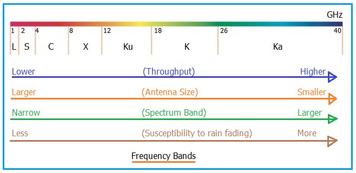HMIC: Advantages and Disadvantages of Hybrid Microwave Integrated Circuits
Explore the pros and cons of Hybrid Microwave Integrated Circuits (HMICs), focusing on component performance, loss, power handling, and design flexibility.
Showing 20 posts (Page 2 of 5)
Advertisement
Explore the pros and cons of Hybrid Microwave Integrated Circuits (HMICs), focusing on component performance, loss, power handling, and design flexibility.

Calculate resonant frequency and CW power of an IMPATT diode using this online tool. Formulas for calculations are provided with examples.

Explore K band frequency characteristics, advantages like balanced throughput and antenna size, and applications in radar, satellite, and astronomy.

Explore Klystron and Gunn diode microwave test benches, their block diagrams, and components used for microwave module testing.

Explore the advantages and disadvantages of klystron tubes, highlighting their characteristics, applications, benefits, and limitations in microwave technology.

A comparison of the advantages and disadvantages of L, S, C, X, Ku, K, and Ka frequency bands, providing a guide for understanding the trade-offs of each band.
A comparison of laser and microwave directed energy weapons, highlighting differences in function, atmospheric effects, range, operation, wavelength, and power.

Calculate Hull cutoff potential and Hartree potential for a magnetron using this online tool. Explore the principles behind cross-field microwave devices.

Explore the advantages and disadvantages of magnetrons, high-power microwave oscillators used in radar systems and microwave ovens. Learn about their benefits and drawbacks.

Explore the pros and cons of MESFETs (Metal-Semiconductor Field-Effect Transistors), including benefits in microwave applications and limitations in gate voltage.

Explore the pros and cons of microstrip patch antennas, including size, cost, bandwidth, and radiation characteristics, for informed design decisions.

Explore the microstrip to slotline transition used in broadband applications. Learn about its design, impedance matching, and the role of radial stubs in achieving multi-octave bandwidth.
Explore the key differences between microstrip lines and coplanar waveguides (CPW) for RF circuit design, covering dispersion, losses, coupling, and design flexibility.

Explore microwave attenuators, their functions in managing signal strength, and various types used in communication and radar systems, including fixed and variable attenuators.

Explore microwave backhaul technology, its advantages for cellular connectivity, and its role in 4G LTE and 5G NR networks.

Calculate the shape factor and quality factor of a microwave band pass filter (BPF) using this calculator. Enter the center frequency and bandwidth values to get results.

An overview of microwave coaxial lines, their types, construction, and characteristic impedance, highlighting advantages and disadvantages.
Explore the pros and cons of microwave communication, covering its large bandwidth, spectrum management, and line-of-sight limitations.

Explore the pros and cons of microwave frequency, including bandwidth, antenna size, line-of-sight limitations, and environmental factors.

Explore the construction, working principle, S-matrix, and diverse applications of microwave gyrators in RF and microwave systems.
Advertisement